
Triathlon Training Plan for Beginners
May 18, 2023
A triathlon training plan can help ensure you're as ready as you can be when race day comes.
How long should you train for a triathlon?
The number of weeks you put into training depends on your fitness and event skill. A triathlon training plan for beginners should cover at least 8 to 12 weeks. The type of triathlon you compete in will alter your triathlon training.
Training for a sprint triathlon of a 750m swim, biking 20k and a 5k run should be 4 to 5 hours a week. An Olympic triathlon training plan for a 1500m swim, 40k bike and 10k run involves training for 6 to 7.5 hours a week.
How to build your plan
Design your triathlon training plan around continual and healthy improvement. If you start a triathlon training schedule you cannot maintain, you could quickly burn out. If your plan is too tough, you might get injured. Build your strength and stamina over weeks for a higher fitness level with less risk.
Sample triathlon training plan
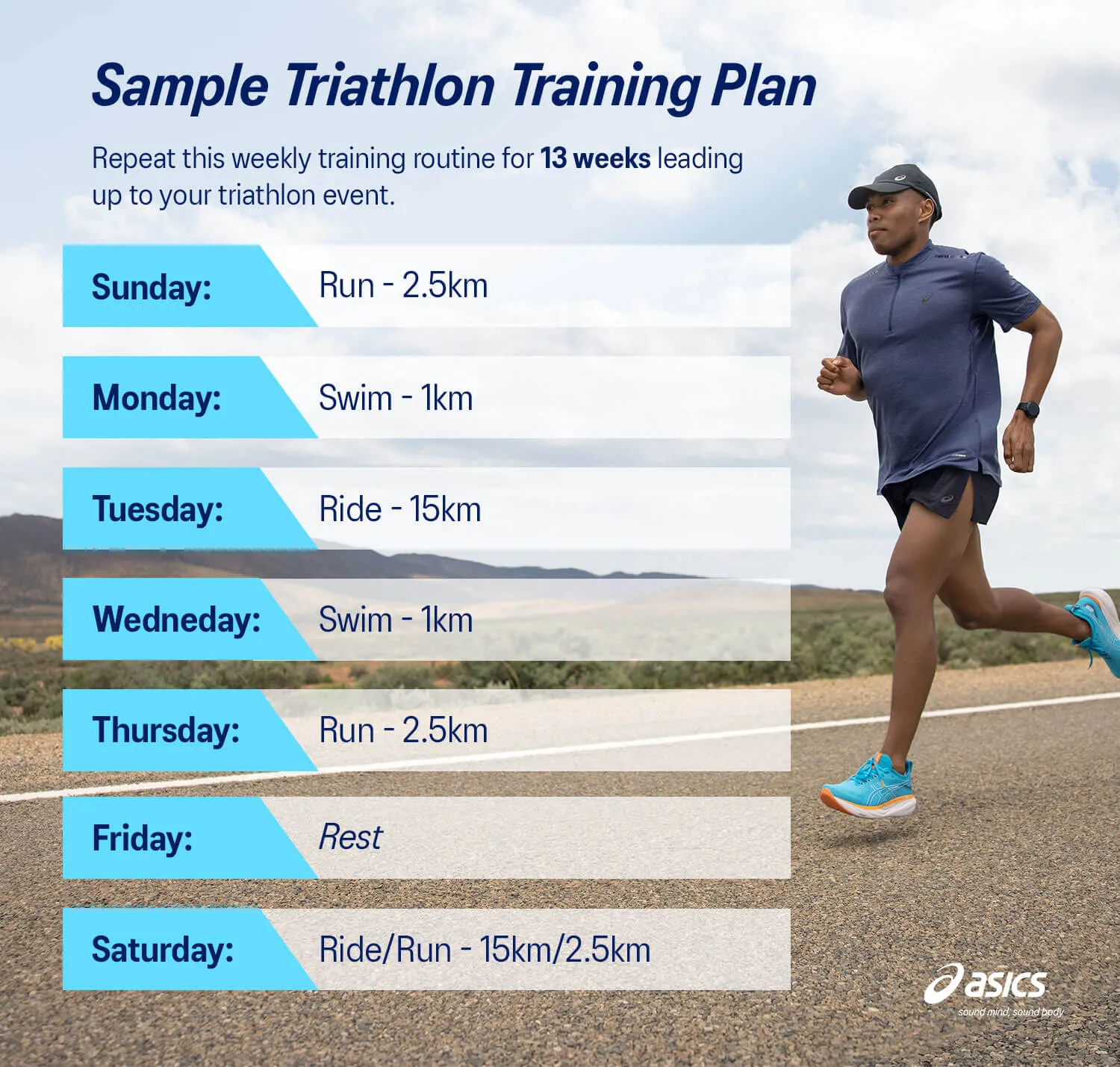
If you're reasonably fit and looking for a challenge, a triathlon can be a rewarding experience. ASICS triathlete Matt Hauser recommends the following weekly training schedule to help you get prepared.
Repeat this training routine for 13 weeks leading up to your triathlon race:
- Sunday: Run – 2.5km
- Monday: Swim – 1km
- Tuesday: Ride – 15km
- Wednesday: Swim – 1km
- Thursday: Run – 2.5km
- Friday: Rest
- Saturday: Ride/Run – 15km/2.5km
You can increase the distance and intensity of your workouts by about 10-20% each week. You can also track your progress on your triathlon training plan and see your week-to-week improvements using the ASICS Runkeeper app.
5 tips for training for your first triathlon
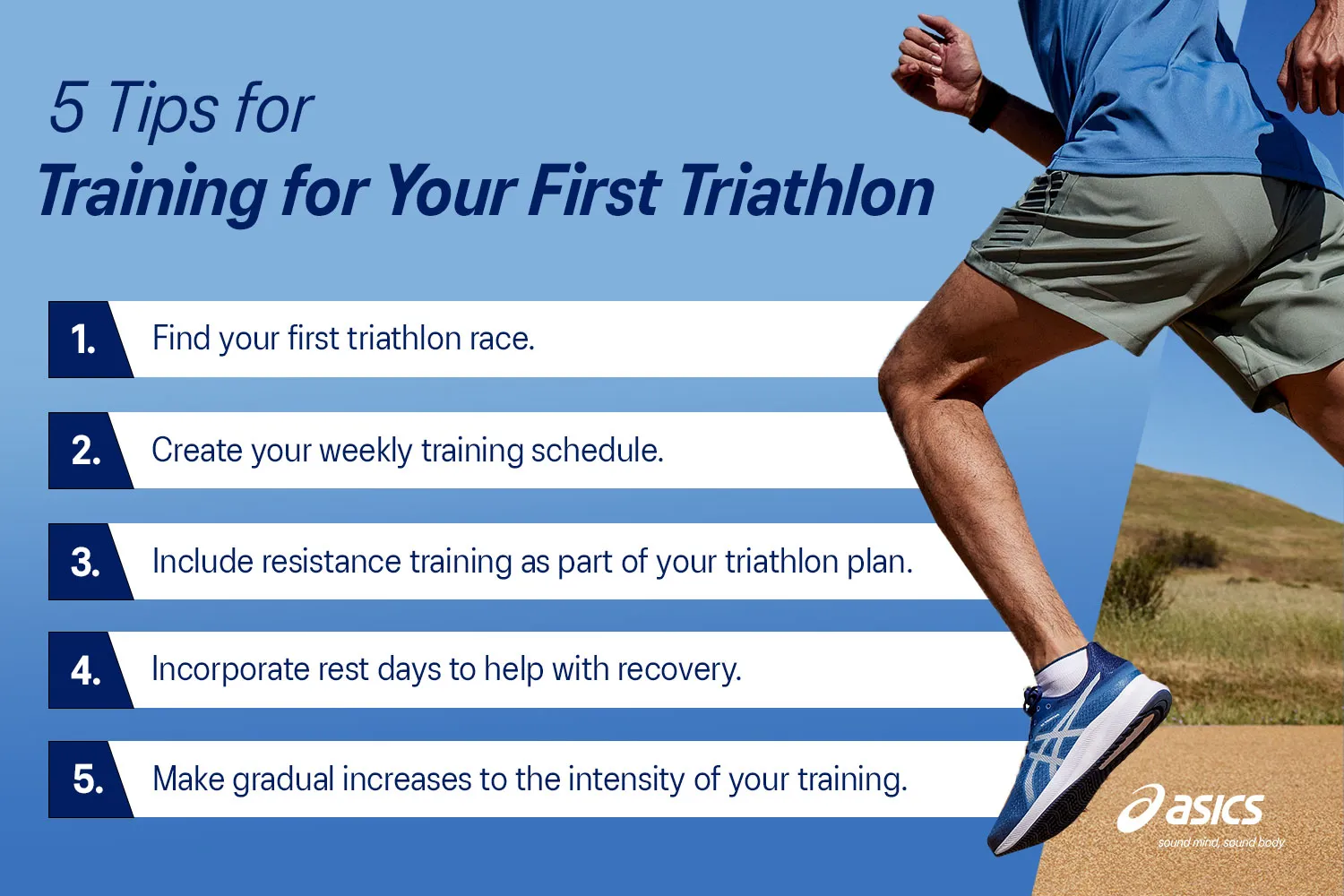
1. Find your first triathlon race
Triathlon events include short distance sprints. Olympic triathlons are double the distance of sprints. Ironman events can take a grueling 16 or more hours to complete. Beginners can benefit from starting with shorter, easier races.
2. Create your weekly training schedule
An ideal triathlon training schedule for everyone doesn’t exist. Create your training plan based on your physical condition, goals, and the type of triathlon you plan to run.
3. Include resistance training as part of your triathlon plan
While stamina is important, you need strength and resiliency, too. Resistance training can help strengthen muscles and reduce injury risk so your triathlon training schedule should include strength days.
4. Incorporate rest days to help with recovery
A triathlon training plan for beginners and seasoned athletes must include rest days. You could avoid plateaus that can happen when you train the same way every day. Rest days prevent injuries from overdoing it and give your body time to repair tissue damage and to recover from fatigue.
5. Make gradual increases to the intensity of your training
For a sprint, Olympic triathlon training plan or prepping for an IRONMAN you need an aerobic base. Build the intensity and duration for endurance and sustained power. Progressively building your performance in each event may help you reach a faster pace on race day. The ASICS Runkeeper app makes it easy to do everything from setting goals to tracking your training progress.
Triathlon FAQs
What is the difference between a triathlon and an IRONMAN race?
Triathlons are a mix of swimming, biking and running. Sprint triathlons cover the shortest distances, whereas an IRONMAN involves extraordinary distances and intensity. A sprint triathlon includes a 750m swim, a 20k on a bike and a 5k run. IRONMAN races cover a total of 226.3k; a 3.9k swim, a 180.2k bike race and 42.2k marathon run.
Do you need a tri bike for triathlon training?
Professional triathletes benefit from specially-designed gear, and that includes a tri bike. These specialised bikes are aerodynamic and offer greater comfort than regular race bikes. That said, most triathletes can perform well without a specialised bike.
What gear do you need for triathlon training?
Wear multi-purpose gear to minimize time spent transitioning from one event to the next. The basics include:
- Triathlon shorts and a moisture-wicking shirt.
- Shoes for biking and running, like the NOOSA TRI™ 14 shoe for men and women.
- A bike helmet that promotes airflow.
- Sunglasses are helpful for the bike event.
Get inspired by ASICS' top triathletes
When setting up your triathlon training plan for beginners, look to some of the greats for an eye on what is possible.
Kristian Blummenfelt
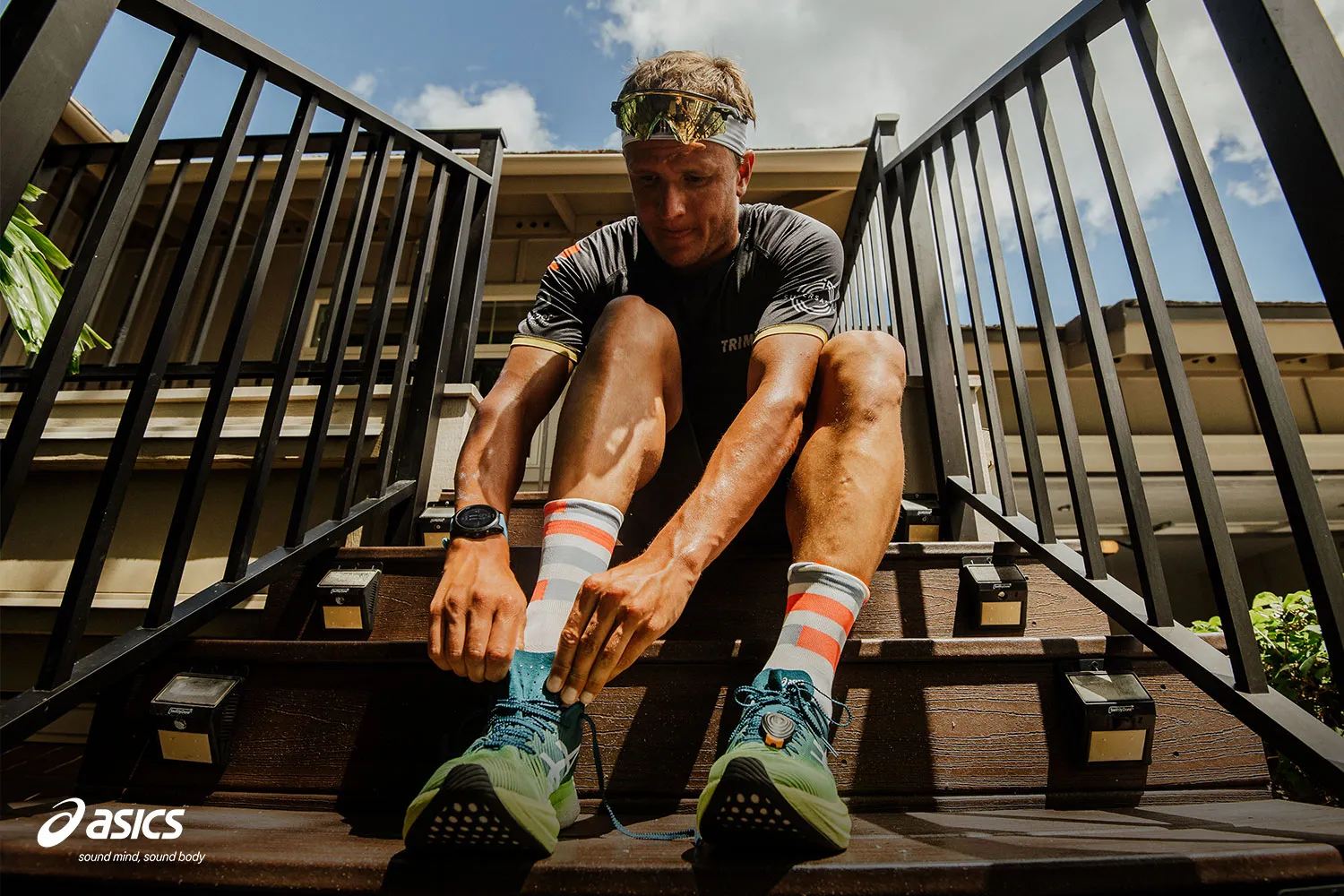
Norwegian Kristian Blummenfelt is the first male triathlete to win both the Olympic and World titles in the same year in 2021. He won gold in the 2020 Summer Olympics and broke the men’s record at the 2021 World Championship in St. George, Utah. He trains 8 hours a day with a 10k swim, bikes 300k, and runs 100k every week.
“I think the more consistent you are in training and building gradually, it’s easier to stay injury-free,” Blummenfelt said.
Flora Duffy
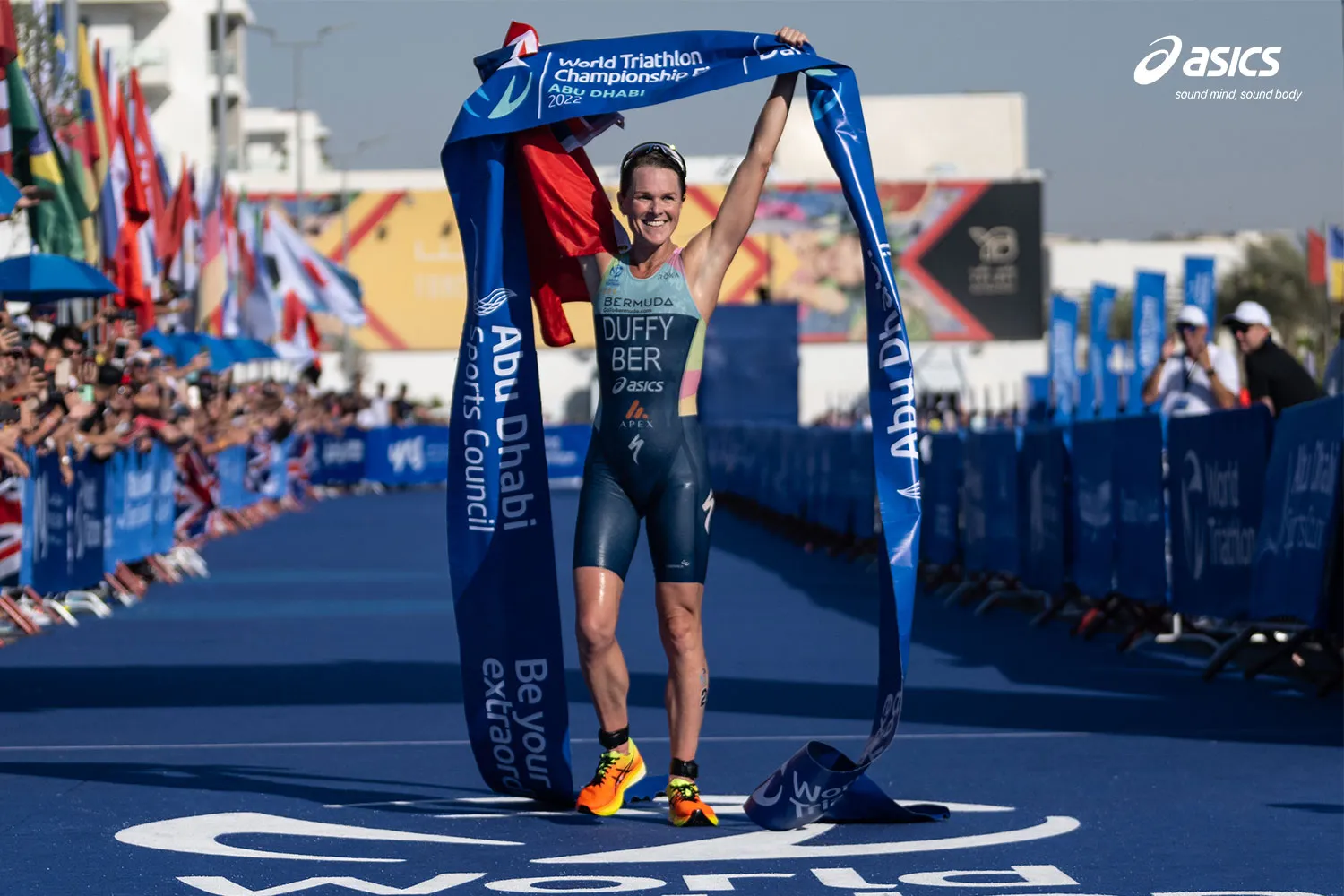
Flora Duffy began competing in triathlon events at the age of 7 and has since grown to become a dominant figure in the sport. She took home the gold at the 2020 Summer Olympics in Tokyo, making her Bermuda's first ever Olympic gold medalist. She’s also the first woman ever to have won an Olympic and World title in the same year.
Duffy is a 4-time winner of the World Triathlon Championship Series, securing her most recent gold medal at the 2022 Abu Dhabi Grand Final.
Lucy Charles-Barclay
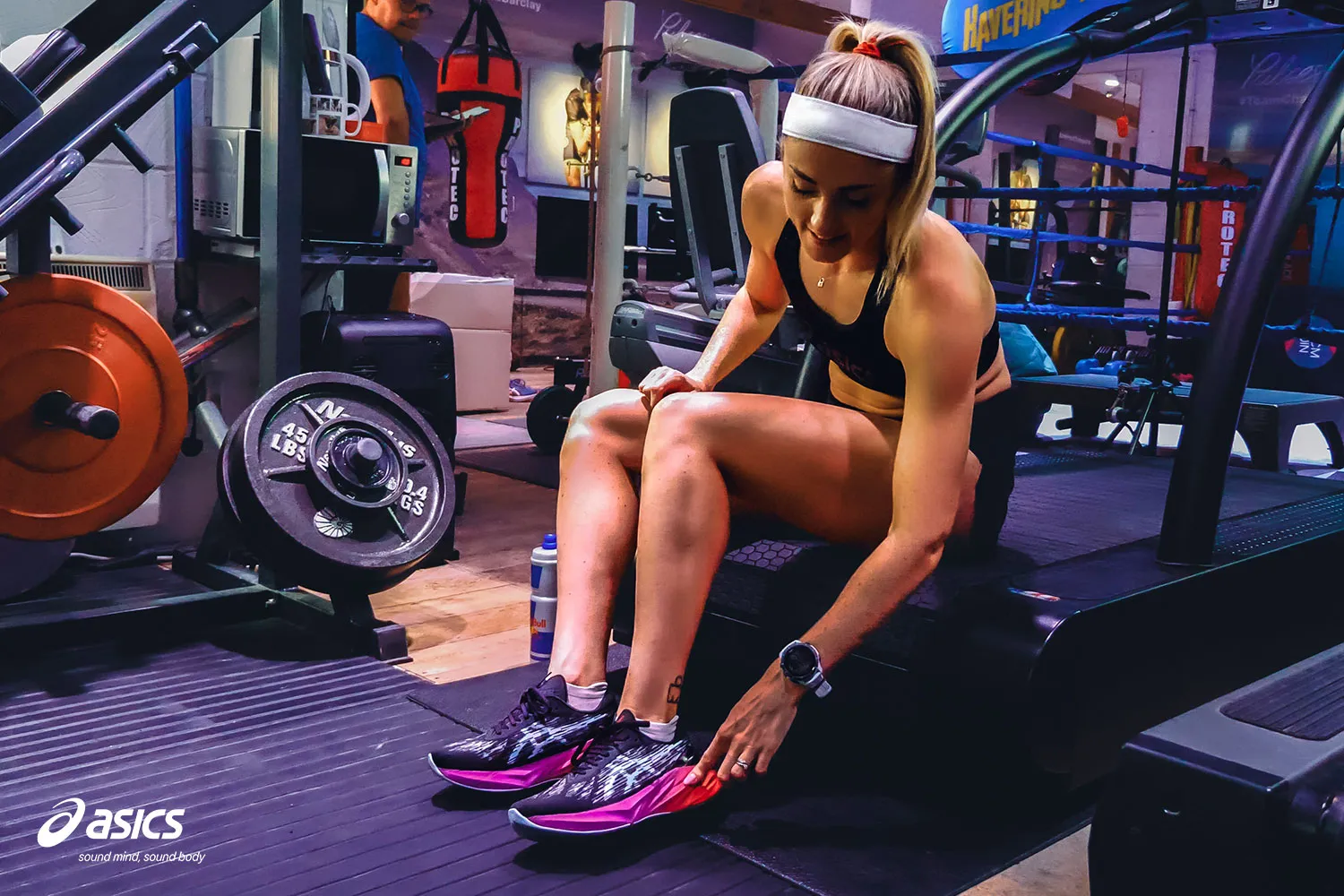
Lucy Charles-Barclay ran her first triathlon in 2014. She had a 10 year competitive swimming career, but no triathlon experience. Dedicated training paid off when Lucy won both the IRONMAN and 70.3 titles in 2015. She won the 2021 World Championship in St. George, Utah, finishing eight minutes ahead of the field.
“Training for three disciplines is a real balancing act. I do between 20 and 30 hours of training a week, depending on what phase of training I’m in.” She stresses regular rest: “Mondays and Fridays are my lower-volume days ” Charles-Barclay said.
Please note: This information does not contain or constitute medical advice or a medical opinion, and it is provided for informational purposes only. You should always consult a qualified and licensed medical professional prior to beginning or modifying any diet or exercise program.







